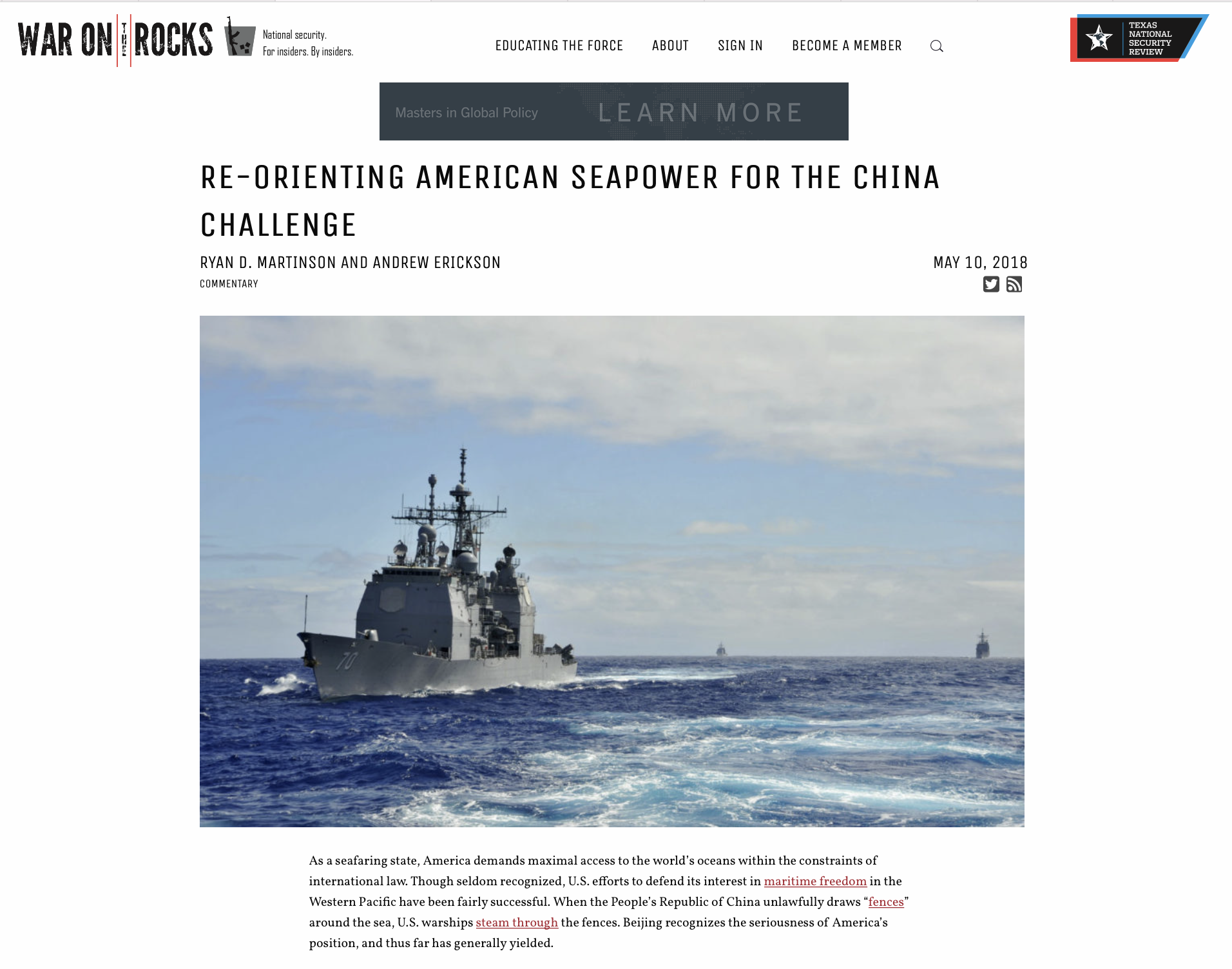Re-Orienting American Sea Power for the China Challenge
Ryan D. Martinson and Andrew S. Erickson, “Re-Orienting American Sea Power for the China Challenge,” War on the Rocks, 10 May 2018.
Summary: this article proposes a new set of tools for countering China’s maritime gray zone expansion.
As a seafaring state, America demands maximal access to the world’s oceans within the constraints of international law. Though seldom recognized, U.S. efforts to defend its interest in maritime freedom in the Western Pacific have been fairly successful. When the People’s Republic of China unlawfully draws “fences” around the sea, U.S. warships steam through the fences. Beijing recognizes the seriousness of America’s position, and thus far has generally yielded.
However, when it comes to helping its allies and partners protect themselves against Chinese encroachment, the United States has a mixed record. Since 2006, Beijing has dramatically expanded the frontiers of its control in the East and South China Seas. To pursue its irredentist agenda, Beijing has largely relied on unarmed or lightly armed paranaval forces — coast guard and militia — conducting operations in what has been described as the “gray zone” between war and peace. Despite the robust presence of American sea power in contested areas of maritime East Asia, the United States has largely failed to halt China’s bullying behavior. This failure devalues Washington’s commitments to its friends and shakes the foundations of the U.S. alliance system — the true source of American global influence.
To better aid its allies and partners, Washington should consider expanding its catalogue of peacetime maritime operations. Passive presence has proved inadequate. In some cases, American policymakers may need to place U.S. forces on the front lines, where they can play a more direct role helping other states counter China’s seaward expansion. … … …






































